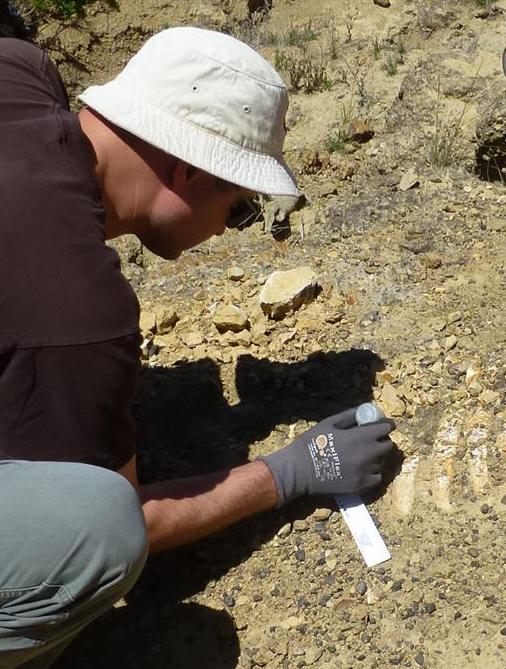Paleontologist Dr. Jonathan Hoffman led the team of volunteers.
A fossil of an extinct species of sea cow was discovered on Santa Rosa Island, a new find for the Channel Islands and conceivably one of the oldest of its kind on the west coast of North America with an estimated age between 20-25 million years ago.
Scientists think that the fossilized remains of a skull and partially articulated rib cage may represent a new species of sea cow, an ancient relative of dugongs known as sirenians. They anticipate this to be confirmed when the skull is analyzed by Dr. Jorge Velez-Juarbe, a marine mammal taxonomic expert at the Natural History Museum of Los Angeles County.
The discovery was made by United States Geologic Survey (USGS) scientists Scott Minor and Kevin Schmidt as they were mapping faults on the island on July 17, 2017.
A team of volunteers led by paleontologist Dr. Jonathan Hoffman with the Santa Barbara Museum of Natural History are protecting the specimen for the upcoming winter and planning for an excavation next spring or early summer.
“This sea cow may have only been exposed the past few years after being buried for millions of years,” said Hoffman. “It came from a different place and a different time period.”
Scientists believe the sea cow lived in shallow seas when the island’s coastal landscape was situated hundreds of miles south of its current location. The remnants of at least four other sea cow fossils from different individuals were also found in the near vicinity.
The scientific team plans to analyze the sea cow’s skull shape and features to identify its relationship to other sirenians. They hope to find teeth remains, pay dirt used to detect the diet and age of the specimen.
To refine the era in which the sea cow lived, the team has collected marine microfauna fossils (snails, clam shells, and crustacea) within the surrounding rock strata for USGS experts to study.
Sirenians or sea cows are torpedo-shaped aquatic mammals that live in shallow waters and grow to be massive in size, up to 10 feet in length. In some parts of the world their fossil records date back to 50 million years ago.
At one time there were over a dozen different genera of sirenians, a name derived from the mermaids of Greek mythology. The cause of their decline is unclear but may be linked to changes in food availability and environmental and oceanographic conditions.
Their modern relatives include three manatee species and the one remaining direct relative, the dugong, found in the warm waters of the Pacific Ocean and the east coast of Africa. The last remaining dugong on the west coast of North America, the Stellar’s sea cow, was hunted to extinction by humans in the 1760s

